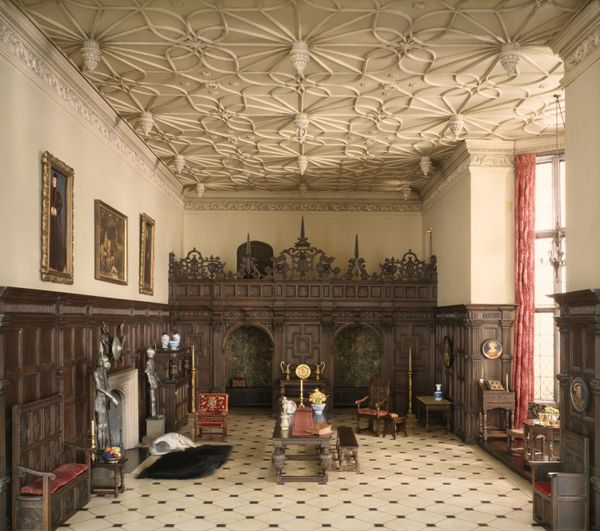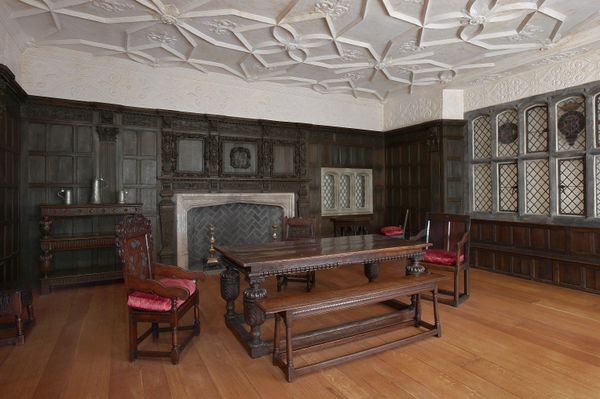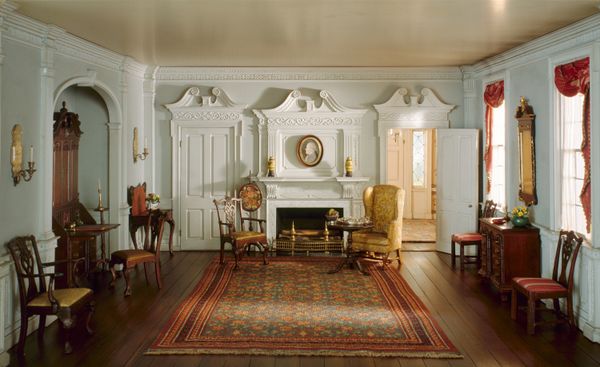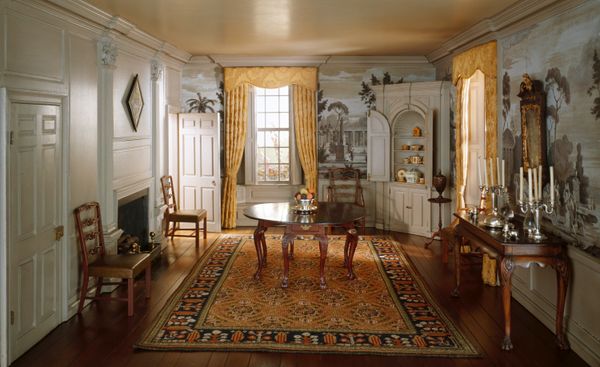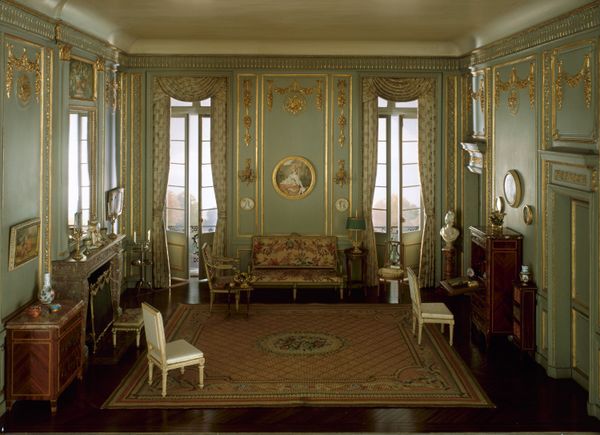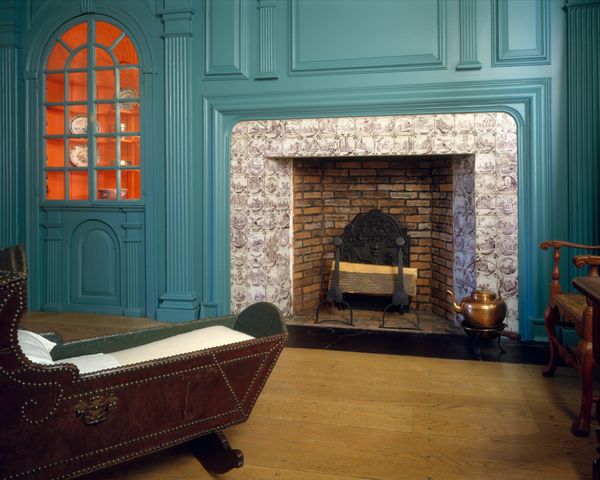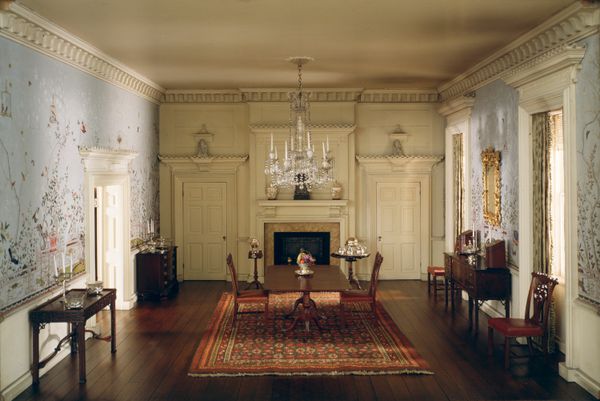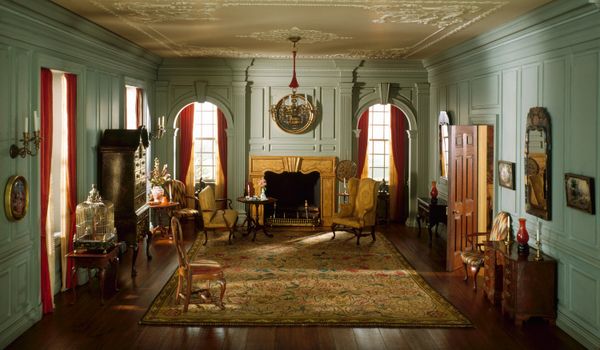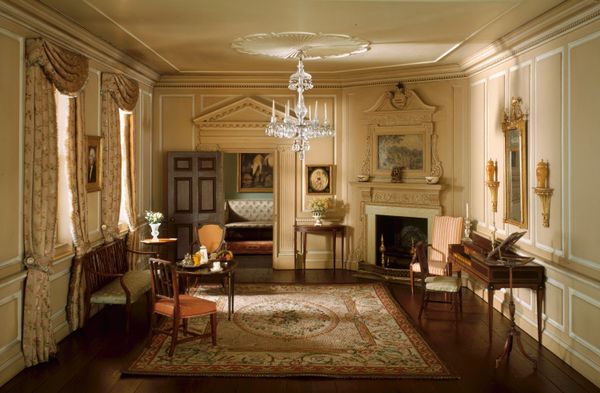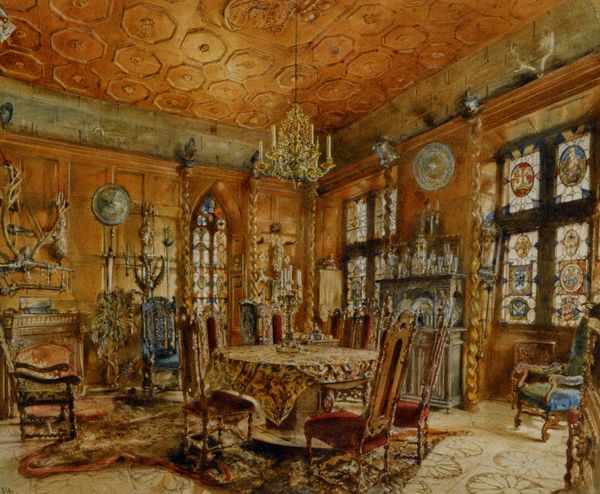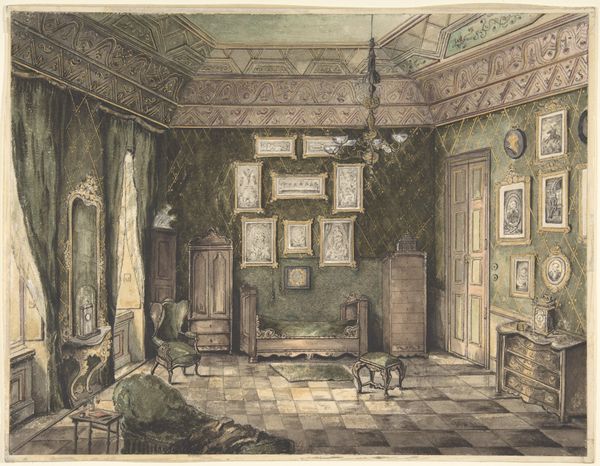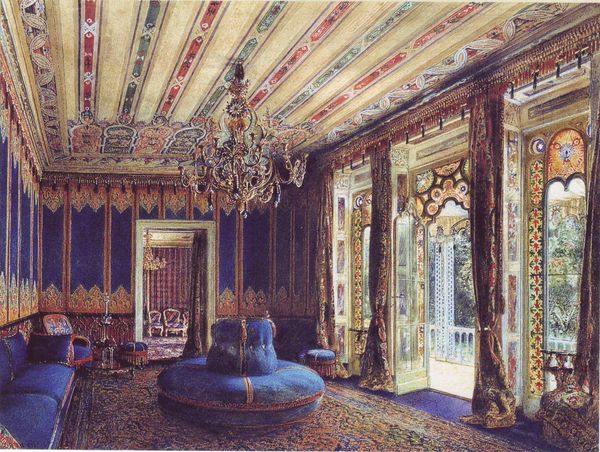
E-2: English Bedchamber of the Jacobean or Stuart Period, 1603-88 c. 1937
0:00
0:00
wood, architecture
#
portrait
#
medieval
#
traditional architecture
#
wood
#
architecture
Dimensions: Interior: 17 × 27 1/2 × 24 1/4 in. (42.5 × 68.75 × 60.625 cm) Scale: 1 inch = 1 foot
Copyright: Public Domain
Curator: I'm drawn to the feeling of warmth within this miniature bedchamber. All the intricate woodwork seems to absorb and soften the light streaming in. Editor: This is one of Narcissa Niblack Thorne’s “Thorne Rooms” dating from about 1937. It depicts an English Bedchamber during the Jacobean or Stuart period. The walls are primarily paneled in carved wood, meticulously replicating the style and materials of the era. Curator: Wood speaks volumes in a setting like this. The carvings create such a sense of place, suggesting stability and perhaps a quiet pride. One can almost feel the touch of the artisans who shaped it. Do these symbolic decorations evoke certain motifs for you? Editor: It certainly directs our focus toward craft—the material, the labor invested. Each carving shows painstaking skill. The wainscoting, fireplace, the ceiling: everything relies on the manipulation of this primary material. I see social class, power... wealth is conspicuously presented through meticulous carpentry and detail. Curator: I’d agree completely. There is visual intention, a repetition of certain shapes or heraldic figures creating a sense of history, of lineage, for whomever occupies this space. Though a miniature, it still gives the impression of historical continuity. Editor: Consider the room's purpose; its role in displaying and solidifying social hierarchy. Even seemingly "decorative" elements contribute to an environment communicating dynastic might. Think of the joinery involved, the sourcing of such wood, and the workshops devoted to achieving this refinement on a large scale! The labor alone! Curator: It reminds us that these domestic settings were often sites of power. Take the textiles. I spy heraldic emblems that remind me that textiles could weave stories, legitimizing family history. All within a supposed haven. Editor: Seeing it this way reframes even seemingly quiet architectural details. I'm also struck that it’s a reproduction made decades later in another place; this invites interesting layers for its purpose, design, and consumption within museum culture. Curator: Exactly. I'm grateful you touched on the value beyond a straightforward historical depiction. By observing material choices, we grasp larger ideas about aspiration and memory. Editor: A view I heartily second: by recognizing labor as a historical force, and how artistry with raw materials is used, we expand our appreciation and contextual understanding.
Comments
No comments
Be the first to comment and join the conversation on the ultimate creative platform.

